TLC1542I,, TLC1542M,, TLC1542Q
TLC1542C, TLC1543C, TLC1543I, TLC1543Q
SLAS052G–MARCH 1992–REVISED JANUARY 2006
10-BIT ANALOG-TO-DIGITAL CONVERTERS
WITH SERIAL CONTROL AND 11 ANALOG INPUTS
FEATURES
• 10-Bit Resolution A/D Converter
• 11 Analog Input Channels
• Three Built-In Self-Test Modes
•
Inherent Sample-and-Hold Function
• Total Unadjusted Error: – 1LSB Max
• On-Chip System Clock
• End-of-Conversion (EOC) Output
• Terminal Compatible With TLC542
• CMOS Technology
(DATA OUT)]
DESCRIPTION
The TLC1542C, TLC1542I, TLC1542M, TLC1542Q,
TLC1543C, TLC1543I, and TLC1543Q are CMOS
10-bit switched-capacitor successive-approximation
analog-to-digital converters. These devices have
three inputs and a 3-state output [chip select (CS),
input-output clock (I/O CLOCK), address input
(ADDRESS), and data output
that
provide a direct 4-wire interface to the serial port of a
host processor. These devices allow high-speed data
transfers from the host.
In addition to a high-speed A/D converter and
versatile control capability,
these devices have an
on-chip 14-channel multiplexer that can select any
one of 11 analog inputs or any one of three internal
self-test voltages. The sample-and-hold function is
automatic. At
the
end-of-conversion (EOC) output goes high to
indicate that conversion is complete. The converter
incorporated in the devices features differential
high-impedance reference inputs
facilitate
ratiometric conversion, scaling, and isolation of
analog circuitry from logic and supply noise. A
low-error
switched-capacitor
conversion
over
free-air
temperature range.
the end of A/D conversion,
allows
operating
that
design
full
the
Please be aware that an important notice concerning availability, standard warranty, and use in critical applications of Texas
Instruments semiconductor products and disclaimers thereto appears at the end of this data sheet.
PRODUCTION DATA information is current as of publication date.
Products conform to specifications per the terms of
the Texas
Instruments standard warranty. Production processing does not
necessarily include testing of all parameters.
Copyright © 1992–2006, Texas Instruments Incorporated
www.ti.com1234 567891020191817161514131211A0A1A2A3A4A5A6A7A8GNDVCCEOCI/O CLOCKADDRESSDATA OUTCSREF+REF−A10A9DB, DW, J, OR N PACKAGE(TOP VIEW)3212019910111213456781817161514I/O CLOCKADDRESSDATA OUTCSREF+A3A4A5A6A7FK OR FN PACKAGE(TOP VIEW)A2A1A0A10REF −EOCA8GNDA9VCC�
TLC1542I,, TLC1542M,, TLC1542Q
TLC1542C, TLC1543C, TLC1543I, TLC1543Q
SLAS052G–MARCH 1992–REVISED JANUARY 2006
These devices have limited built-in ESD protection. The leads should be shorted together or the device placed in conductive foam
during storage or handling to prevent electrostatic damage to the MOS gates.
AVAILABLE OPTIONS
PACKAGE
SMALL OUTLINE
(DW)
CHIP CARRIER
(FN)
PLASTIC DIP
(N)
CHIP CARRIER
(FK)
CERAMIC DIP
(J)
FUNCTIONAL BLOCK DIAGRAM
TLC1542MFK
TLC1542MJ
SMALL
OUTLINE
(DB)
TLC1543CDB
TLC1543IDB
TA
0 C to 70 C
-40 C to 85 C
-40 C to 125 C
-55 C to 125 C
TLC1542CDW
TLC1543CDW
TLC1542IDW
TLC1543IDW
TLC1542CN
TLC1543CN
TLC1542IN
TLC1543IN
TLC1542CFN
TLC1543CFN
TLC1542IFN
TLC1543IFN
TLC1542QFN
TLC1543QFN
TLC1543QDB
TLC1543QDW
TYPICAL EQUIVALENT INPUTS
2
Submit Documentation Feedback
www.ti.com14-ChannelAnalogMultiplexer410104REF+REF−DATAOUTADDRESSI/O CLOCKCS3EOCA0A1A2A3A4A5A6A7A8A9A1012345678911121815171916141310-BitAnalog-to-DigitalConverter(switched capacitors)Sample andHoldInput AddressRegisterSelf-TestReferenceOutputDataRegisterSystem Clock,Control Logic,and I/OCounters10-to-1 DataSelector andDriverINPUT CIRCUIT IMPEDANCE DURING SAMPLING MODEINPUT CIRCUIT IMPEDANCE DURING HOLD MODE1 kW TYPCi = 60 pF TYP(equivalent inputcapacitance)5 MW TYPA0−A10A0−A10�
TLC1542I,, TLC1542M,, TLC1542Q
TLC1542C, TLC1543C, TLC1543I, TLC1543Q
SLAS052G–MARCH 1992–REVISED JANUARY 2006
TERMINAL
NAME
ADDRESS
NO.
17
A0-A10
1-9, 11, 12
CS
DATA OUT
EOC
GND
I/O CLOCK
REF+
REF-
VCC
15
16
19
10
18
14
13
20
TERMINAL FUNCTIONS
I/O
DESCRIPTION
I
I
I
O
O
I
I
I
I
I
.
Serial address input. A 4-bit serial address selects the desired analog input or test voltage that is to be
converted next. The address data is presented with the MSB first and shifts in on the first four rising
edges of I/O CLOCK. After the four address bits have been read into the address register, this input is
ignored for the remainder of the current conversion period.
Analog signal inputs. The 11 analog inputs are applied to these terminals and are internally
multiplexed. The driving source impedance should be less than or equal to 1 kW
Chip select. A high-to-low transition on this input resets the internal counters and controls and enables
DATA OUT, ADDRESS, and I/O CLOCK within a maximum of a setup time plus two falling edges of
the internal system clock. A low-to-high transition disables ADDRESS and I/O CLOCK within a setup
time plus two falling edges of the internal system clock.
The 3-state serial output for the A/D conversion result. This output is in the high-impedance state
when CS is high and active when CS is low. With a valid chip select, DATA OUT is removed from the
high-impedance state and is driven to the logic level corresponding to the MSB value of the previous
conversion result. The next falling edge of I/O CLOCK drives this output to the logic level
corresponding to the next most significant bit, and the remaining bits shift out in order with the LSB
appearing on the ninth falling edge of I/O CLOCK. On the tenth falling edge of I/O CLOCK, DATA
OUT is driven to a low logic level so that serial interface data transfers of more than ten clocks
produce zeroes as the unused LSBs.
End of conversion. This output goes from a high to a low logic level on the trailing edge of the tenth
I/O CLOCK and remains low until the conversion is complete and data are ready for transfer.
The ground return terminal for the internal circuitry. Unless otherwise noted, all voltage measurements
are with respect to this terminal.
Input/output clock. This terminal receives the serial I/O CLOCK input and performs the following four
functions: 1) It clocks the four input address bits into the address register on the first four rising edges
of the I/O CLOCK with the multiplex address available after the fourth rising edge. 2) On the fourth
falling edge of I/O CLOCK, the analog input voltage on the selected multiplex input begins charging
the capacitor array and continues to do so until the tenth falling edge of I/O CLOCK. 3) It shifts the
nine remaining bits of the previous conversion data out on DATA OUT. 4) It transfers control of the
conversion to the internal state controller on the falling edge of the tenth clock.
The upper reference voltage value (nominally VCC) is applied to this terminal. The maximum input
voltage range is determined by the difference between the voltage applied to this terminal and the
voltage applied to the REF- terminal.
The lower reference voltage value (nominally ground) is applied to this terminal.
Positive supply voltage
DETAILED DESCRIPTION
With chip select (CS) inactive (high), the ADDRESS and I/O CLOCK inputs are initially disabled and DATA OUT
is in the high-impedance state. When the serial interface takes CS active (low), the conversion sequence begins
with the enabling of I/O CLOCK and ADDRESS and the removal of DATA OUT from the high-impedance state.
The serial interface then provides the 4-bit channel address to ADDRESS and the I/O CLOCK sequence to I/O
CLOCK. During this transfer, the serial interface also receives the previous conversion result from DATA OUT.
I/O CLOCK receives an input sequence that is between 10 and 16 clocks long from the host serial interface. The
first four I/O clocks load the address register with the 4-bit address on ADDRESS, selecting the desired analog
channel, and the next six clocks providing the control timing for sampling the analog input.
There are six basic serial-interface timing modes that can be used with the device. These modes are determined
by the speed of I/O CLOCK and the operation of CS as shown in Table 1. These modes are (1) a fast mode with
a 10-clock transfer and CS inactive (high) between conversion cycles, (2) a fast mode with a 10-clock transfer
and CS active (low) continuously, (3) a fast mode with an 11- to 16-clock transfer and CS inactive (high)
between conversion cycles, (4) a fast mode with a 16-clock transfer and CS active (low) continuously, (5) a slow
mode with an 11- to 16-clock transfer and CS inactive (high) between conversion cycles, and (6) a slow mode
with a 16-clock transfer and CS active (low) continuously.
Submit Documentation Feedback
3
www.ti.com�
TLC1542I,, TLC1542M,, TLC1542Q
TLC1542C, TLC1543C, TLC1543I, TLC1543Q
SLAS052G–MARCH 1992–REVISED JANUARY 2006
The MSB of the previous conversion appears at DATA OUT on the falling edge of CS in mode 1, mode 3, and
mode 5, on the rising edge of EOC in mode 2 and mode 4, and following the sixteenth clock falling edge in
mode 6. The remaining nine bits are shifted out on the next nine falling edges of I/O CLOCK. Ten bits of data
are transmitted to the host-serial interface through DATA OUT. The number of serial clock pulses used also
depends on the mode of operation, but a minimum of ten clock pulses is required for conversion to begin. On
the tenth clock falling edge, the EOC output goes low and returns to the high logic level when conversion is
complete and the result can be read by the host. Also, on the tenth clock falling edge, the internal logic takes
DATA OUT low to ensure that the remaining bit values are zero when the I/O CLOCK transfer is more than ten
clocks long.
Table 1 lists the operational modes with respect to the state of CS, the number of I/O serial transfer clocks that
can be used, and the timing edge on which the MSB of the previous conversion appears at the output.
MODES
CS
NO. OF 1/O CLOCK
MSB AT DATA OUT(1)
Table 1. MODE OPERATION
Fast Modes
Slow Modes
Mode 1 High between conversion cycles
Mode 2 Low continuously
Mode 3 High between conversion cycles
Mode 4 Low continuously
Mode 5 High between conversion cycles
Mode 6 Low continuously
(1) These edges also initiate serial-interface communication.
(2) No more than 16 clocks should be used.
(3) No more than 16 clocks should be used.
10
10
11 TO 16 (2)
16(2)
11 to 16 (3)
16(3)
CS falling edge
EOC rising edge
CS falling edge
EOC rising edge
CS falling edge
16th clock falling edge
TIMING
DIAGRAM
Figure 9
Figure 10
Figure 11
Figure 12
Figure 13
Figure 14
FAST MODES
The device is in a fast mode when the serial I/O CLOCK data transfer is completed before the conversion is
completed. With a 10-clock serial transfer, the device can only run in a fast mode since a conversion does not
begin until the falling edge of the tenth I/O CLOCK.
MODE 1: FAST MODE, CS INACTIVE (HIGH) BETWEEN CONVERSION CYCLES, 10-CLOCK TRANSFER
In this mode, CS is inactive (high) between serial I/O CLOCK transfers and each transfer is ten clocks long. The
falling edge of CS begins the sequence by removing DATA OUT from the high-impedance state. The rising edge
of CS ends the sequence by returning DATA OUT to the high-impedance state within the specified delay time.
Also, the rising edge of CS disables the I/O CLOCK and ADDRESS terminals within a setup time plus two falling
edges of the internal system clock.
MODE 2: FAST MODE, CS ACTIVE (LOW) CONTINUOUSLY, 10-CLOCK TRANSFER
In this mode, CS is active (low) between serial I/O CLOCK transfers and each transfer is ten clocks long. After
the initial conversion cycle, CS is held active (low) for subsequent conversions; the rising edge of EOC then
begins each sequence by removing DATA OUT from the low logic level, allowing the MSB of the previous
conversion to appear immediately on this output.
MODE 3: FAST MODE, CS INACTIVE (HIGH) BETWEEN CONVERSION CYCLES, 11- to 16-CLOCK
TRANSFER
In this mode, CS is inactive (high) between serial I/O CLOCK transfers, and each transfer can be 11 to 16 clocks
long. The falling edge of CS begins the sequence by removing DATA OUT from the high-impedance state. The
rising edge of CS ends the sequence by returning DATA OUT to the high-impedance state within the specified
delay time. Also, the rising edge of CS disables the I/O CLOCK and ADDRESS terminals within a setup time
plus two falling edges of the internal system clock.
4
Submit Documentation Feedback
www.ti.com�
TLC1542I,, TLC1542M,, TLC1542Q
TLC1542C, TLC1543C, TLC1543I, TLC1543Q
SLAS052G–MARCH 1992–REVISED JANUARY 2006
MODE 4: FAST MODE, CS ACTIVE (LOW) CONTINUOUSLY, 16-CLOCK TRANSFER
In this mode, CS is active (low) between serial I/O CLOCK transfers and each transfer must be exactly 16 clocks
long. After the initial conversion cycle, CS is held active (low) for subsequent conversions; the rising edge of
EOC then begins each sequence by removing DATA OUT from the low logic level, allowing the MSB of the
previous conversion to appear immediately on this output.
SLOW MODES
In a slow mode, the conversion is completed before the serial I/O CLOCK data transfer is completed. A slow
mode requires a minimum 11-clock transfer into I/O CLOCK, and the rising edge of the eleventh clock must
occur before the conversion period is complete; otherwise, the device loses synchronization with the host-serial
interface and CS has to be toggled to initialize the system. The eleventh rising edge of the I/O CLOCK must
occur within 9.5 m s after the tenth I/O clock falling edge.
MODE 5: SLOW MODE, CS INACTIVE (HIGH) BETWEEN CONVERSION CYCLES, 11- to 16-CLOCK
TRANSFER
In this mode, CS is inactive (high) between serial I/O CLOCK transfers and each transfer can be 11 to 16 clocks
long. The falling edge of CS begins the sequence by removing DATA OUT from the high-impedance state. The
rising edge of CS ends the sequence by returning DATA OUT to the high-impedance state within the specified
delay time. Also, the rising edge of CS disables the I/O CLOCK and ADDRESS terminals within a setup time
plus two falling edges of the internal system clock.
MODE 6: SLOW MODE, CS ACTIVE (LOW) CONTINUOUSLY, 16-CLOCK TRANSFER
In this mode, CS is active (low) between serial I/O CLOCK transfers and each transfer must be exactly 16 clocks
long. After the initial conversion cycle, CS is held active (low) for subsequent conversions. The falling edge of
the sixteenth I/O CLOCK then begins each sequence by removing DATA OUT from the low state, allowing the
MSB of the previous conversion to appear immediately at DATA OUT. The device is then ready for the next
16-clock transfer initiated by the serial interface.
ADDRESS BITS
The 4-bit analog channel-select address for the next conversion cycle is presented to the ADDRESS terminal
(MSB first) and is clocked into the address register on the first four leading edges of I/O CLOCK. This address
selects one of 14 inputs (11 analog inputs or three internal test inputs).
ANALOG INPUTS AND TEST MODES
The 11 analog inputs and the three internal test inputs are selected by the 14-channel multiplexer according to
the input address as shown in Tables 2 and 3. The input multiplexer is a break-before-make type to reduce
input-to-input noise injection resulting from channel switching.
Sampling of the analog input starts on the falling edge of the fourth I/O CLOCK, and sampling continues for six
I/O CLOCK periods. The sample is held on the falling edge of the tenth I/O CLOCK. The three test inputs are
applied to the multiplexer, sampled, and converted in the same manner as the external analog inputs.
Submit Documentation Feedback
5
www.ti.com�
TLC1542I,, TLC1542M,, TLC1542Q
TLC1542C, TLC1543C, TLC1543I, TLC1543Q
SLAS052G–MARCH 1992–REVISED JANUARY 2006
Table 2. ANALOG-CHANNEL-SELECT ADDRESS
ANALOG INPUT SELECTED
VALUE SHIFTED INTO ADDRESS
INPUT
BINARY
HEX
A0
A1
A2
A3
A4
A5
A6
A7
A8
A9
A10
0000
0001
0010
0011
0100
0101
0110
0111
1000
1001
1010
0
1
2
3
4
5
6
7
8
9
A
Table 3. TEST-MODE-SELECT ADDRESS
INTERNAL SELF-TEST
VOLTAGE SELECTED(1)
VALUE SHIFTED INTO
ADDRESS INPUT
BINARY
HEX
OUTPUT RESULT (HEX)(2)
Vref-
Vref+
1011
1100
1101
B
C
D
200
000
3FF
(1) Vref+ is the voltage applied to the REF+ input, and Vref- is the voltage applied to the REF- input.
(2) The output results shown are the ideal values and vary with the reference stability and with internal
offsets.
In the first phase of
CONVERTER AND ANALOG INPUT
The CMOS threshold detector in the successive-approximation conversion system determines each bit by
examining the charge on a series of binary-weighted capacitors (see Figure 1).
the
conversion process, the analog input is sampled by closing the SC switch and all ST switches simultaneously.
This action charges all the capacitors to the input voltage.
In the next phase of the conversion process, all ST and SC switches are opened and the threshold detector
begins identifying bits by identifying the charge (voltage) on each capacitor relative to the reference (REF-)
voltage. In the switching sequence, ten capacitors are examined separately until all ten bits are identified and
then the charge-convert sequence is repeated. In the first step of the conversion phase, the threshold detector
looks at the first capacitor (weight = 512). Node 512 of this capacitor is switched to the REF+ voltage, and the
equivalent nodes of all the other capacitors on the ladder are switched to REF-. If the voltage at the summing
node is greater than the trip point of the threshold detector (approximately one-half VCC), a 0 bit is placed in the
output register and the 512-weight capacitor is switched to REF-. If the voltage at the summing node is less than
the trip point of the threshold detector, a 1 bit is placed in the register and the 512-weight capacitor remains
connected to REF+ through the remainder of the successive-approximation process. The process is repeated for
the 256-weight capacitor, the 128-weight capacitor, and so forth down the line until all bits are counted.
With each step of the successive-approximation process, the initial charge is redistributed among the capacitors.
The conversion process relies on charge redistribution to count and weigh the bits from MSB to LSB.
6
Submit Documentation Feedback
www.ti.comVref+ − Vref−2�
TLC1542I,, TLC1542M,, TLC1542Q
TLC1542C, TLC1543C, TLC1543I, TLC1543Q
SLAS052G–MARCH 1992–REVISED JANUARY 2006
Figure 1. Simplified Model of the Successive-Approximation System
CHIP-SELECT OPERATION
The trailing edge of CS starts all modes of operation, and CS can abort a conversion sequence in any mode. A
high-to-low transition on CS within the specified time during an ongoing cycle aborts the cycle, and the device
returns to the initial state (the contents of the output data register remain at the previous conversion result).
Exercise care to prevent CS from being taken low close to completion of conversion because the output data
can be corrupted.
REFERENCE VOLTAGE INPUTS
There are two reference inputs used with the device: REF+ and REF-. These voltage values establish the upper
and lower limits of the analog input to produce a full-scale and zero reading respectively. The values of REF+,
REF-, and the analog input should not exceed the positive supply or be lower than GND consistent with the
specified absolute maximum ratings. The digital output is at full scale when the input signal is equal to or higher
than REF+ and at zero when the input signal is equal to or lower than REF-.
Submit Documentation Feedback
7
www.ti.comSCThresholdDetectorNode 512REF−REF+ST512VITo OutputLatchesREF+REF+REF+REF+1248161282561REF+REF+REF−REF−REF−REF−REF−REF−REF−REF−STSTSTSTSTSTSTST�
TLC1542I,, TLC1542M,, TLC1542Q
TLC1542C, TLC1543C, TLC1543I, TLC1543Q
SLAS052G–MARCH 1992–REVISED JANUARY 2006
ABSOLUTE MAXIMUM RATINGS
over operating free-air temperature range (unless otherwise noted)(1)
VCC, see (2)
VI
VO
Vref+
Vref-
TA
Tstg
Supply voltage range
Input voltage range
Output voltage range
Positive reference voltage
Negative reference voltage
Peak input current (any input)
Peak total input current (all inputs)
Operating free-air temperature range
TLC1542C, TLC1543C
TLC1542I, TLC1543I
TLC1542Q, TLC1543Q
TLC1542M
Storage temperature range,
Lead temperature 1,6 mm (1/16 inch) from the case for 10 seconds
UNIT
-0.5 V to 6.5 V
-0.3 V to VCC + 0.3 V
-0.3 V to VCC + 0.3 V
VCC + 0.1 V
-0.1 V
– 20 mA
– 30 mA
0 C to 70 C
-40 C to 85 C
-40 C to 125 C
-55 C to 125 C
-65 C to 150 C
260 C
(1) Stresses beyond those listed under absolute maximum ratings may cause permanent damage to the device. These are stress ratings
only, and functional operation of the device at these or any other conditions beyond those indicated under recommended operating
conditions is not implied. Exposure to absolute-maximum-rated conditions for extended periods may affect device reliability.
(2) All voltage values are with respect to digital ground with REF- and GND wired together (unless otherwise noted).
RECOMMENDED OPERATING CONDITIONS
VCC
Vref+, see (1)
Vref-, see (1)
Supply voltage
Positive reference voltage
Negative reference voltage
Vref+-Vref-, see (1)
Differential reference voltage
VIH
VIL
tsu(A), see Figure 4
th(A), see Figure 4
th(CS), see Figure 5
tsu(CS), see (2) and
Figure 5
twH(I/O)
twL(I/O)
tt(I/O), see (4) and
Figure 6
tt(CS)
Analog input voltage ,see (1)
High-level control input voltage
Low-level control input voltage
Setup time, address bits at data input before I/O
CLOCK›
Hold time, address bits after I/O CLOCK›
Hold time, CS low after last I/O CLOCKfl
Setup time, CS low before clocking in first
address bit
Clock frequency at I/O CLOCK, see (3)
Pulse duration, I/O CLOCK high,
Pulse duration, I/O CLOCK low,
Transition time, I/O CLOCK,
Transition time, ADDRESS and CS,
VCC = 4.5 V to 5.5 V
VCC = 4.5 V to 5.5 V
MIN
4.5
2.5
0
2
100
0
0
1.425
0
190
190
NOM
5
VCC
0
VCC
MAX
5.5
VCC+0.
2
VCC
0.8
UNIT
V
V
V
V
V
V
V
ns
ns
ns
m s
2.1
1
10
MHz
ns
ns
m s
m s
(1) Analog input voltages greater than that applied to REF+ convert as all ones (1111111111), while input voltages less than that applied to
REF- convert as all zeros (0000000000). The device is functional with reference voltages down to 1 V (Vref+ - Vref-); however, the
electrical specifications are no longer applicable.
(2) To minimize errors caused by noise at CS, the internal circuitry waits for a setup time plus two falling edges of the internal system clock
after CSfl before responding to control input signals. Therefore, no attempt should be made to clock in an address until the minimum CS
setup time has elapsed.
(3) For 11- to 16-bit transfers, after the tenth I/O CLOCK falling edge (£ 2 V) at least 1 I/O CLOCK rising edge (‡ 2 V) must occur within 9.5
m s.
room temperature, the devices function with input clock transition time as slow as 1 m s for remote data-acquisition applications where
the sensor and the A/D converter are placed several feet away from the controlling microprocessor.
(4) This is the time required for the clock input signal to fall from VIHmin to VILmax or to rise from VILmax to VIHmin. In the vicinity of normal
8
Submit Documentation Feedback
www.ti.com�

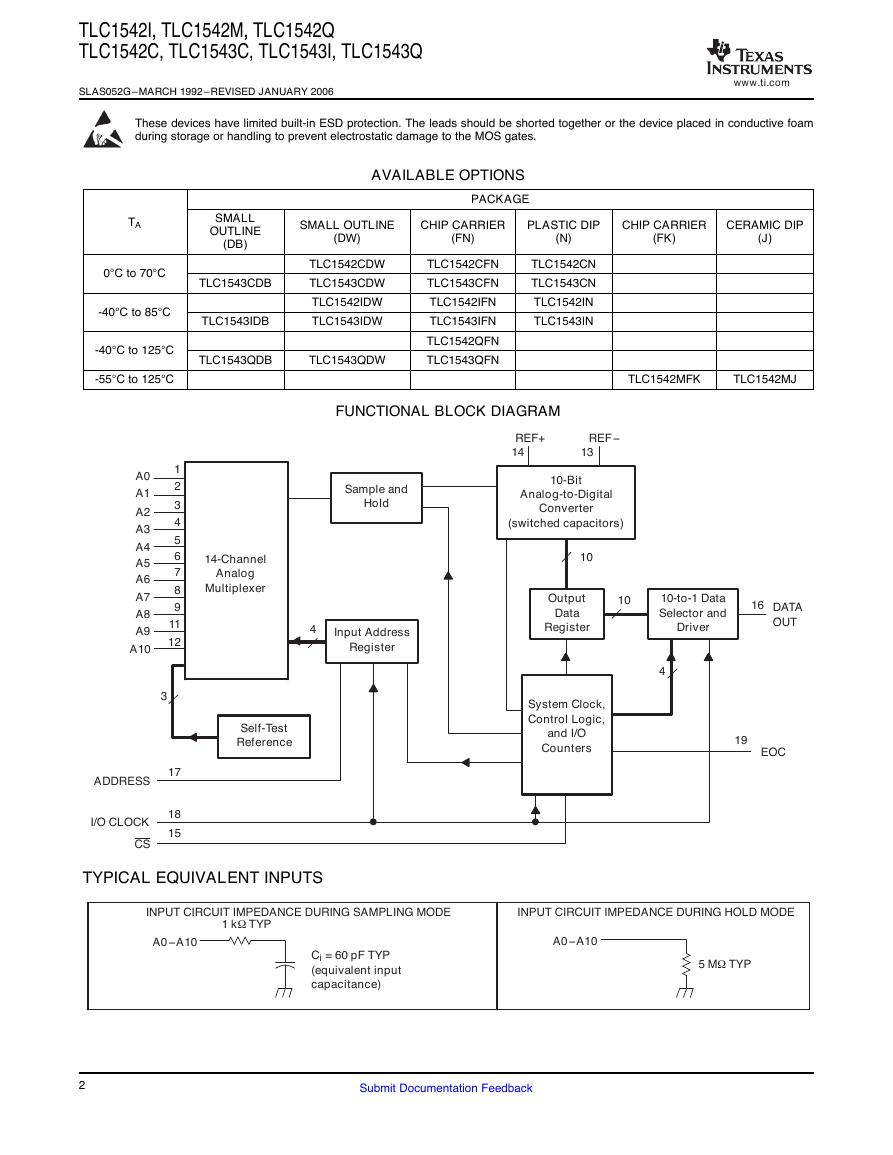
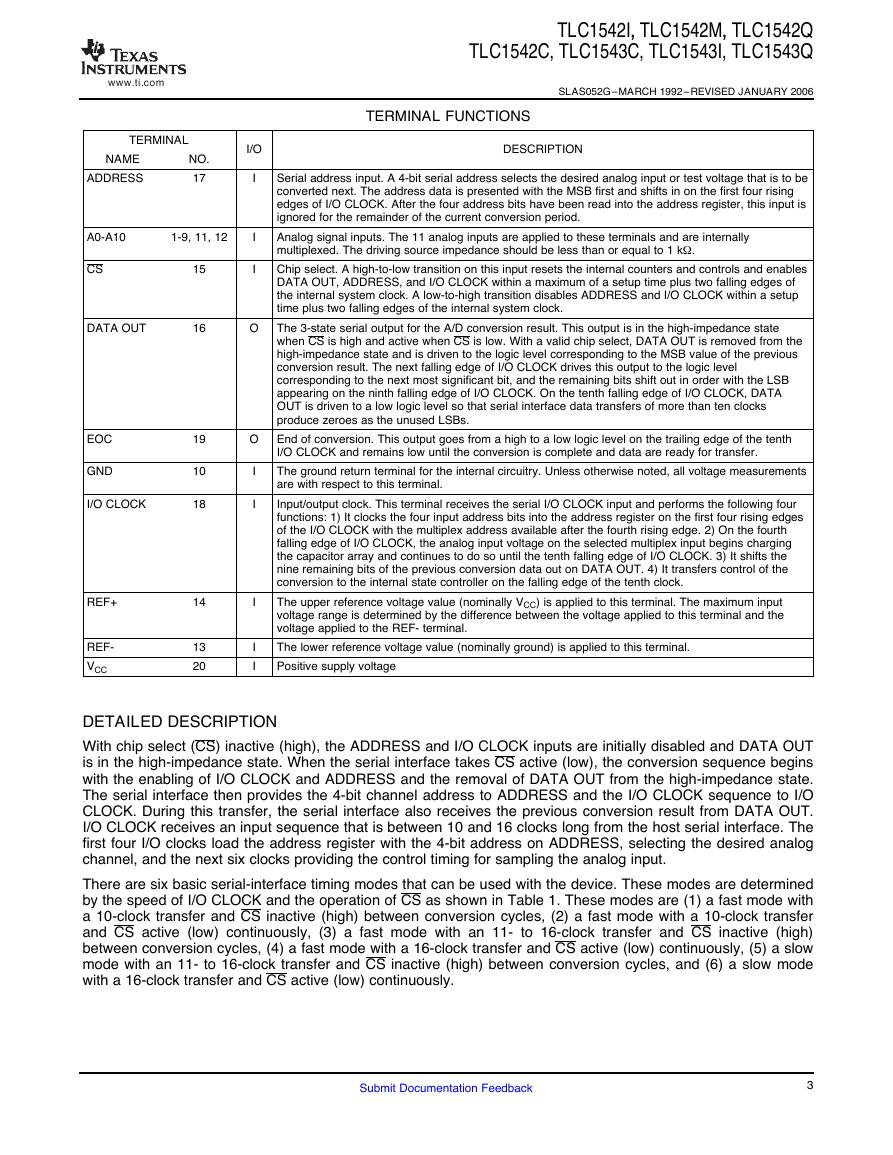
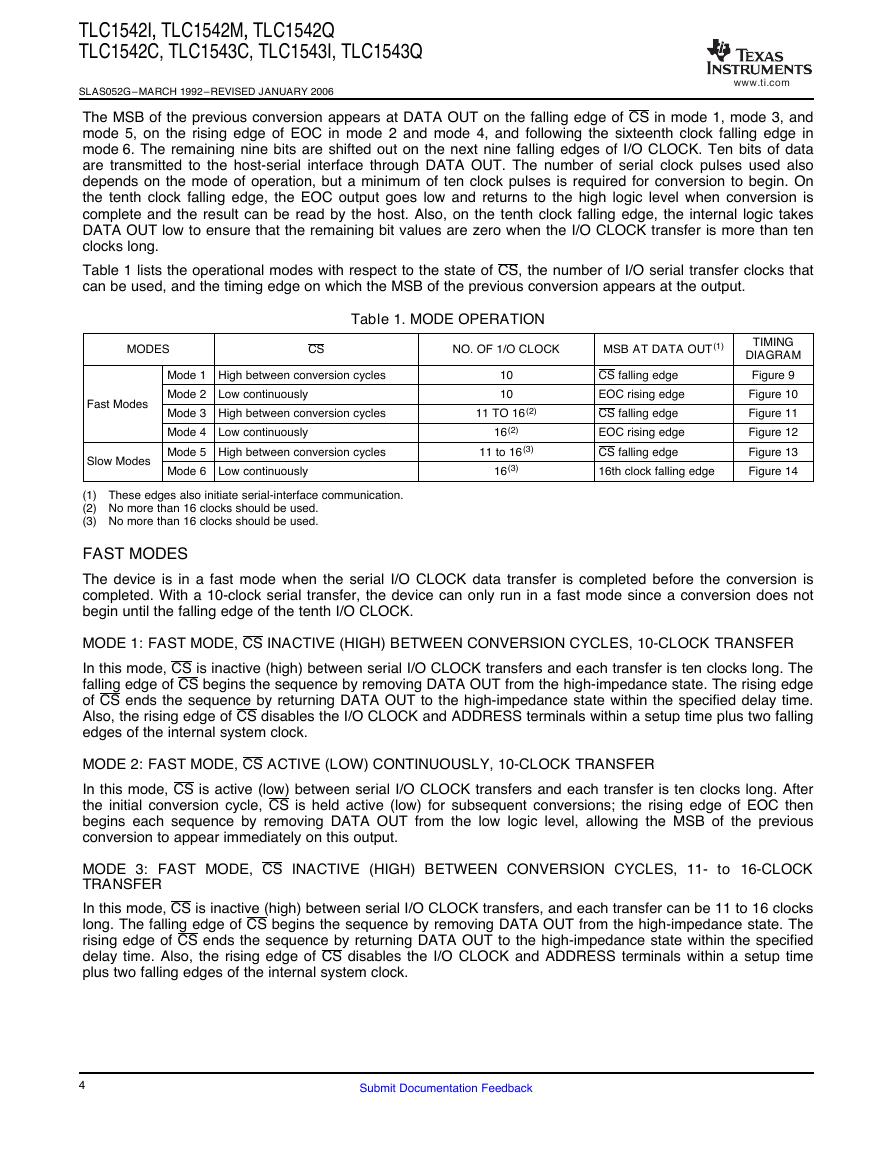
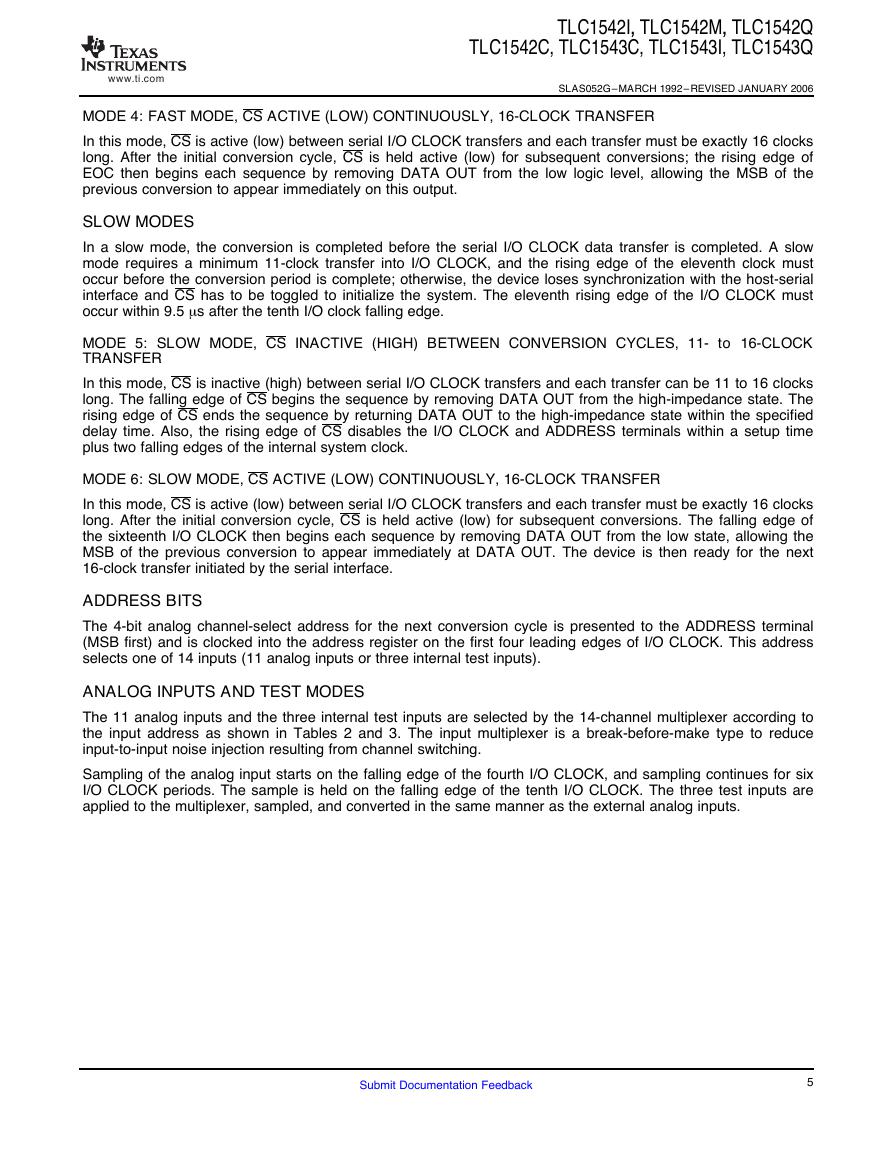
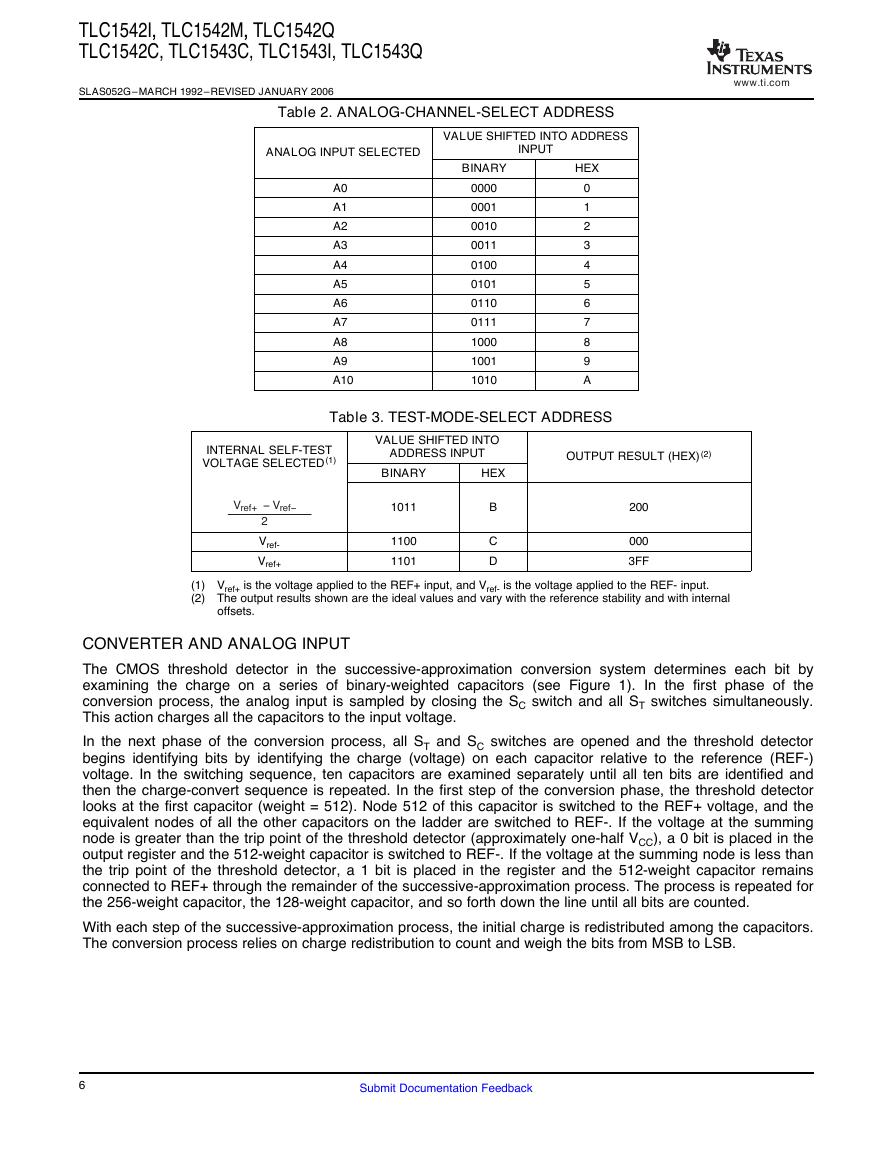
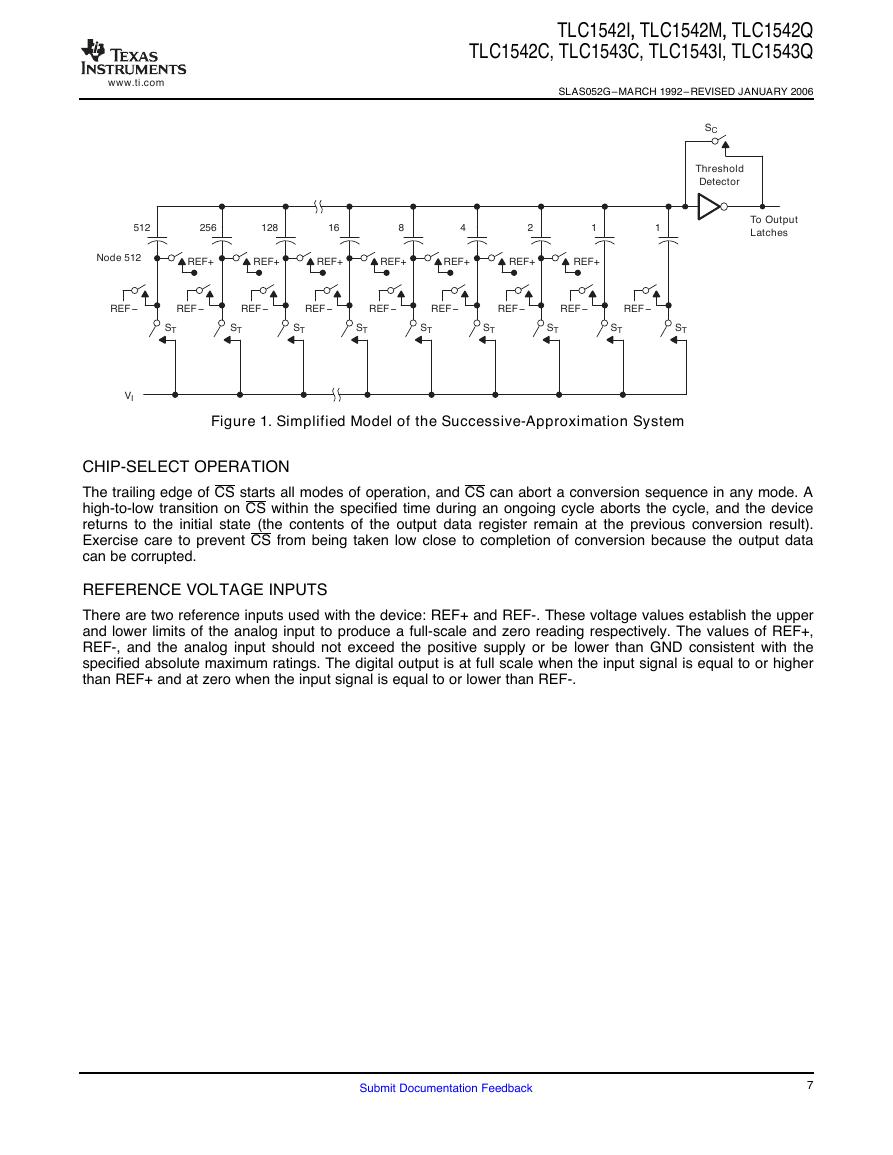
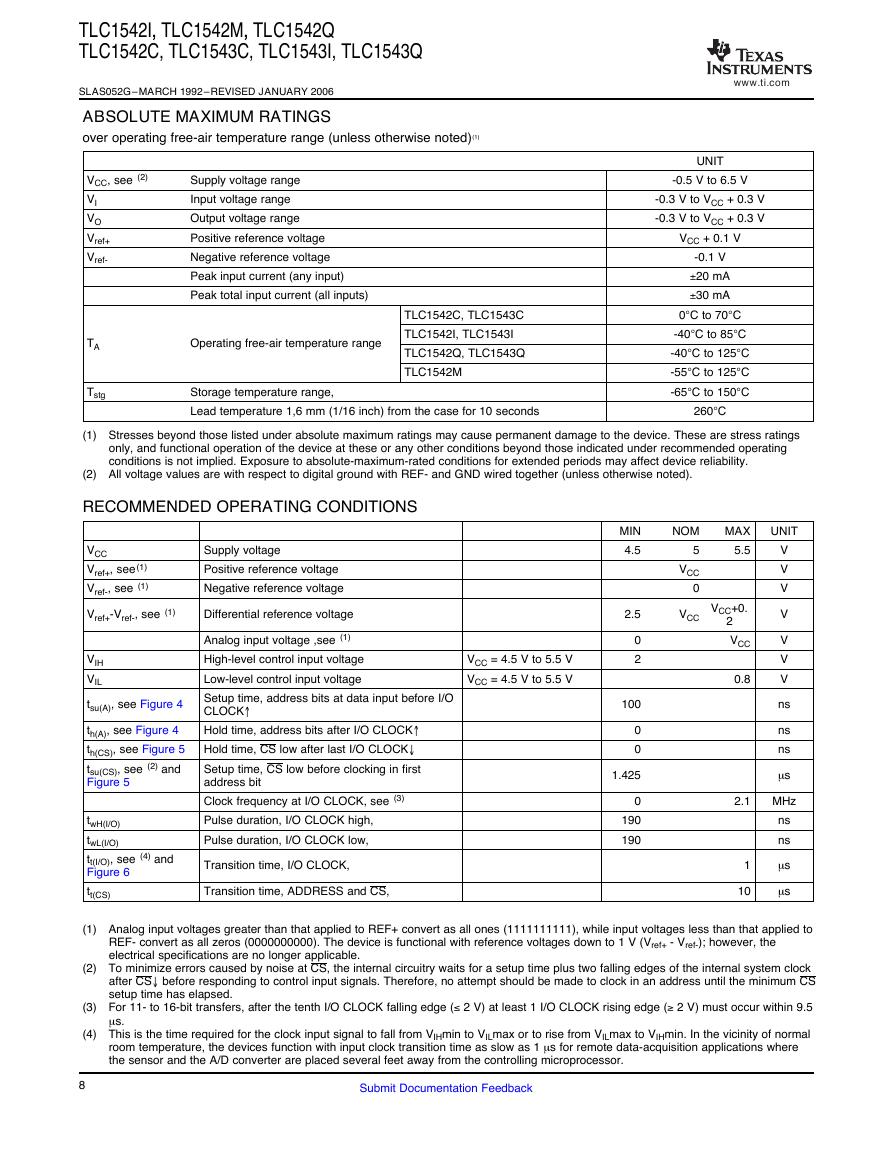








 V2版本原理图(Capacitive-Fingerprint-Reader-Schematic_V2).pdf
V2版本原理图(Capacitive-Fingerprint-Reader-Schematic_V2).pdf 摄像头工作原理.doc
摄像头工作原理.doc VL53L0X简要说明(En.FLVL53L00216).pdf
VL53L0X简要说明(En.FLVL53L00216).pdf 原理图(DVK720-Schematic).pdf
原理图(DVK720-Schematic).pdf 原理图(Pico-Clock-Green-Schdoc).pdf
原理图(Pico-Clock-Green-Schdoc).pdf 原理图(RS485-CAN-HAT-B-schematic).pdf
原理图(RS485-CAN-HAT-B-schematic).pdf File:SIM7500_SIM7600_SIM7800 Series_SSL_Application Note_V2.00.pdf
File:SIM7500_SIM7600_SIM7800 Series_SSL_Application Note_V2.00.pdf ADS1263(Ads1262).pdf
ADS1263(Ads1262).pdf 原理图(Open429Z-D-Schematic).pdf
原理图(Open429Z-D-Schematic).pdf 用户手册(Capacitive_Fingerprint_Reader_User_Manual_CN).pdf
用户手册(Capacitive_Fingerprint_Reader_User_Manual_CN).pdf CY7C68013A(英文版)(CY7C68013A).pdf
CY7C68013A(英文版)(CY7C68013A).pdf TechnicalReference_Dem.pdf
TechnicalReference_Dem.pdf